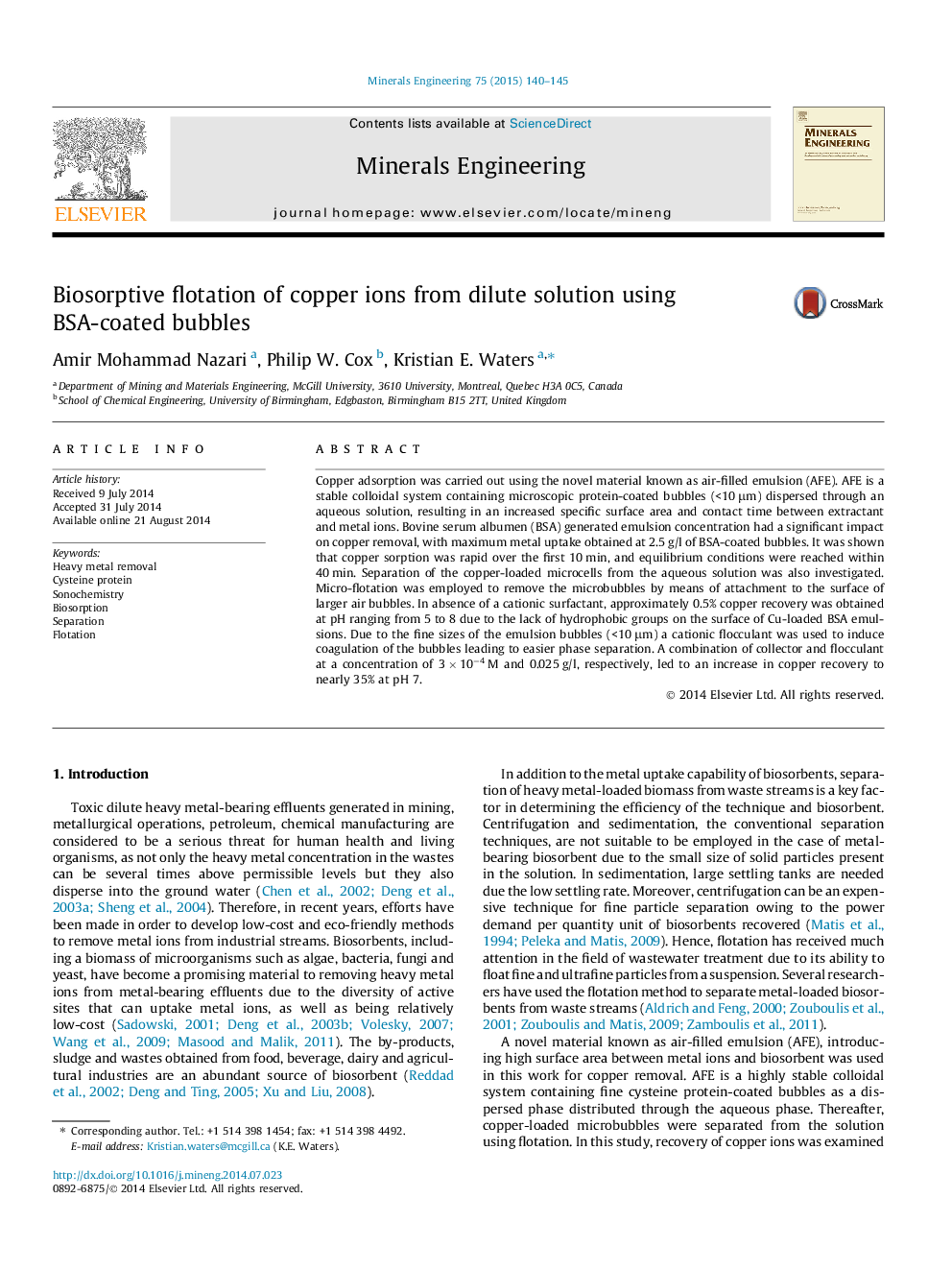| Article ID | Journal | Published Year | Pages | File Type |
|---|---|---|---|---|
| 232983 | Minerals Engineering | 2015 | 6 Pages |
•Air filled emulsions used to remove metal ions from aqueous system.•Flotation used to recover the metal-laden bubbles.•Cationic flocculant used to increase buoyancy of bubbles.
Copper adsorption was carried out using the novel material known as air-filled emulsion (AFE). AFE is a stable colloidal system containing microscopic protein-coated bubbles (<10 μm) dispersed through an aqueous solution, resulting in an increased specific surface area and contact time between extractant and metal ions. Bovine serum albumen (BSA) generated emulsion concentration had a significant impact on copper removal, with maximum metal uptake obtained at 2.5 g/l of BSA-coated bubbles. It was shown that copper sorption was rapid over the first 10 min, and equilibrium conditions were reached within 40 min. Separation of the copper-loaded microcells from the aqueous solution was also investigated. Micro-flotation was employed to remove the microbubbles by means of attachment to the surface of larger air bubbles. In absence of a cationic surfactant, approximately 0.5% copper recovery was obtained at pH ranging from 5 to 8 due to the lack of hydrophobic groups on the surface of Cu-loaded BSA emulsions. Due to the fine sizes of the emulsion bubbles (<10 μm) a cationic flocculant was used to induce coagulation of the bubbles leading to easier phase separation. A combination of collector and flocculant at a concentration of 3 × 10−4 M and 0.025 g/l, respectively, led to an increase in copper recovery to nearly 35% at pH 7.
